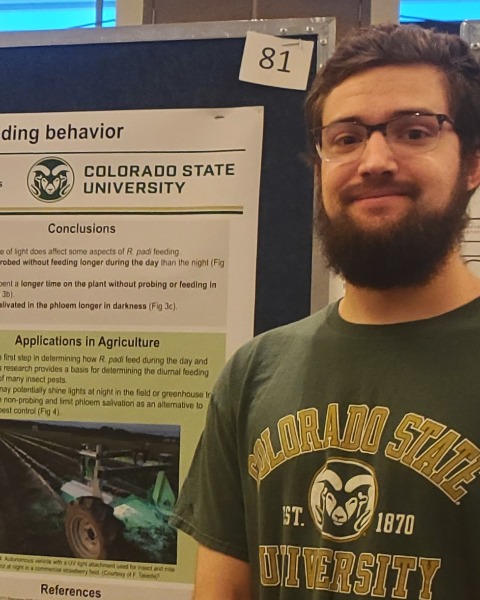Back
Physiology, Biochemistry, and Toxicology
Poster
PBT: General On-Demand Posters
Circadian patterns in aphid feeding behavior

Daniel Kunk
Graduate Student
Colorado State University
Fort Collins, Colorado
Presenting Author(s)
Aphids are a notorious crop pest worldwide, causing yield loss due to direct feeding damage and indirectly from the transmission of plant viruses. Aphids are known to display circadian patterns in behaviors such as locomotion and the release of sex pheromones. The major interaction between plants and aphids occurs during aphid feeding; however, knowledge is lacking regarding circadian patterns in true aphid feeding behaviors as understood by the electrical penetration graph (EPG) technique. Preliminary data suggests that aphids show differences in feeding behaviors between the day and night; however, whether these behaviors persist in constant conditions, a hallmark signature of behaviors controlled by endogenous circadian rhythms, is unknown. Here, we present an experiment to elucidate circadian patterns in feeding behavior by comparing feeding behaviors across a 24h period in normal (light:dark) and constant (light:light) conditions in Rhopalosiphum padi introduced onto succeptible Triticum aestivum var. Chinese Spring seedlings. These experiments will represent a first step in understanding circadian patterns in aphid feeding behavior; however, more experiments need to be conducted to understand how potential circadian patterns in aphid behavior change in the absence of host plant cues.


